
The CARE Course
Critical Procedure - Breech delivery
Back to Critical Procedures - Index page
Home
For all procedures, ask yourself, 'does this need to be done 'now vs later'? And should this be done by 'me vs someone else?' Very often the answers will be 'now' and 'me' - so read on!
Breech delivery
Description
How to deliver a baby in breech presentation.
Indications
The unexpected breech delivery.
Contraindications
If c-section is available. C-section delivery is safer.
Equipment
Standard delivery equipment.
Pudendal block tray (optional).
Piker's or Wrigley's forceps (if available and the operator has experience with them).
Neonatal resuscitation equipment.
Procedure
| 1 | 2 | 3 |
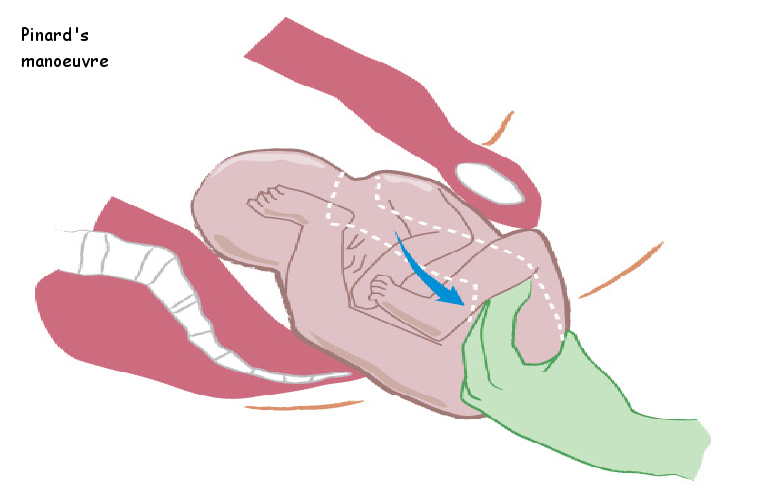 |
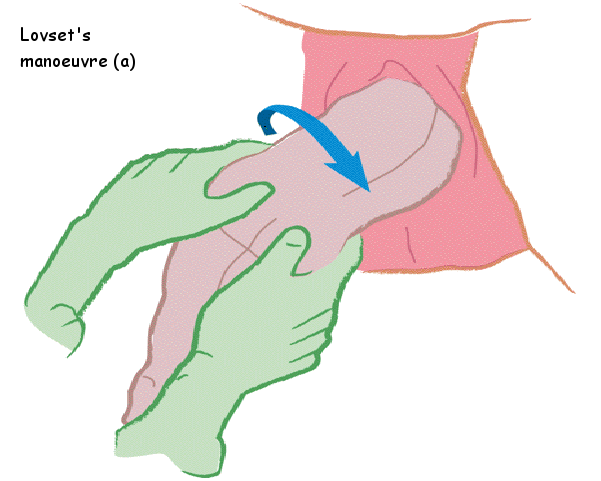 |
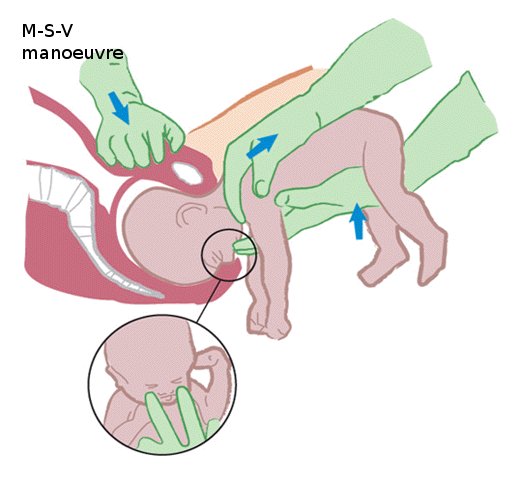 |
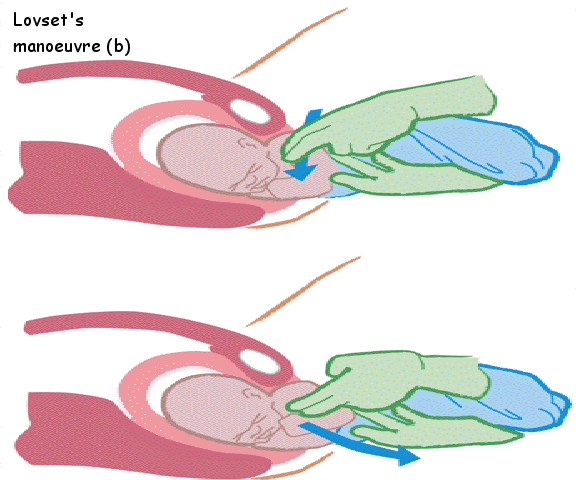 |
||
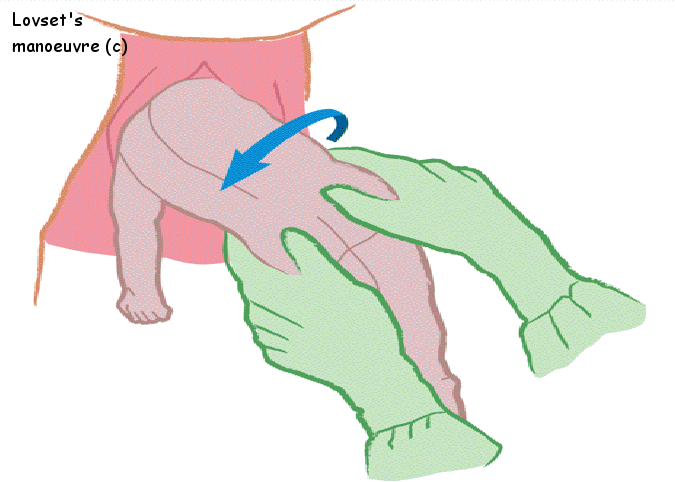 |
Call for help. C-section is the preferred option if available.
Be patient - time is your friend!
Insert urinary catheter to drain bladder and thus give more room in the pelvis.
Reduce risk of entrapment of the baby's head by waiting until full cervical dilation before pushing commences. This is essential.
Consider a pudendal block if you have the skills and the time - it may reduce the urge to push and thus help wait for full cervical dilation. A block is not essential.
Deliver in the lithotomy position with feet up and bottom at the end of the bed so that baby's body can hang downwards.
Three landmarks correspond with actions: Knees visible, scapulae visible, occiput visible.
When knees are visible, deliver the legs by knee flexion and hip abduction (Pinard's manoeuvre).
Don't pull on the trunk.
Try to free a length of cord so that it is not tight.
When the scapulae are visible, deliver the arms - rotate the trunk so that the anterior shoulder moves backwards (towards baby's back) and then bring the anterior arm downwards in front of the face or chest, sweeping it downwards across the chest. Then rotate the trunk gently the other way and repeat the above for the opposite arm. (This is termed Lovset's manoeuvre).
Don't pull and don't hyper-extend the neck!
Maintain head and neck flexion by keeping the baby's body level with, or below the introitus and have an assistant's hand applying suprapubic pressure.
Some cord compression will occur when the head is in the vagina so try to limit head delivery to 5 minutes.
When the occiput is visible, deliver the head. Put one palm on the baby's chest with your index & middle finger on the baby’s cheeks maintaining neck flexion. Put your other hand on the baby’s back with the fingers on the baby’s occiput, maintaining neck flexion. This is the MSV manoeuvre (Mariceau-Smellie-Viet). You may need an assistant to hold the baby’s body which is wrapped in a towel.
If you have the skills, the head may be delivered with Piper's or Wrigley's forceps.
A rescue c-section, if available may be life-saving in the situation of a trapped head.
Alternatively, a trapped head may be released by symphysiotomy (see 'Shoulder dystocia' section).
If the head is trapped in a partially dilated cervix then cervical incisions, made with scissors, at 2 o'clock and 10 o'clock may allow delivery. This procedure is likely to be difficult at best, and will usually produce considerable maternal bleeding.
Anticipate the need to provide some resuscitation to the baby.
Potential pitfalls
Not calling for help early.
Getting the mother to push too early - wait for full cervical dilation.
Don't pull.
Don't hyper-extend the neck. Maintain head flexion.
Prolonged time to deliver the head. The aim is to achieve delivery of the head within 5 minutes.
"Plan B"
Continue to try to organise a c-section even if proceeding with vaginal delivery.
